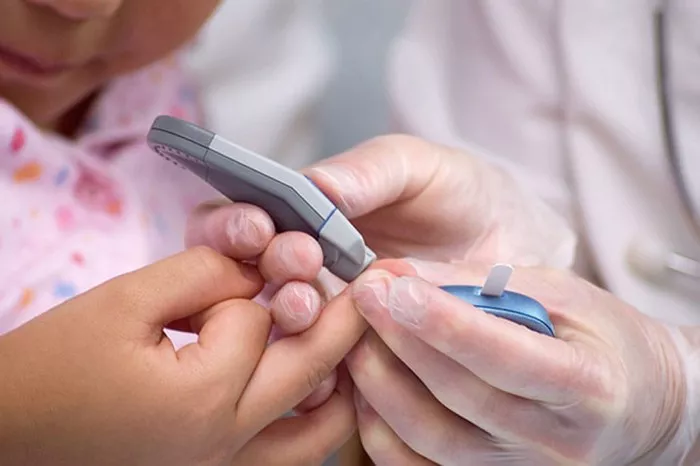Gestational diabetes is a type of diabetes that develops during pregnancy. It can pose risks for both the mother and the baby if not managed properly. Understanding the different levels of gestational diabetes is crucial for effective management and ensuring a healthy pregnancy outcome. In this article, we will delve into what gestational diabetes levels are, how they are measured, and what they mean for pregnant women.
Understanding Gestational Diabetes
Gestational diabetes (GD) occurs when a woman who has never had diabetes develops high blood sugar levels during pregnancy. The condition usually develops around the 24th to 28th week of pregnancy and can lead to complications if not monitored and managed appropriately. Gestational diabetes typically resolves after childbirth, but women who experience it are at higher risk for developing type 2 diabetes later in life.
Causes and Risk Factors
Gestational diabetes occurs when the body cannot produce enough insulin to manage the increased blood sugar levels during pregnancy. Insulin is a hormone that helps regulate blood sugar. During pregnancy, the body needs more insulin to manage the increased glucose from the diet and support the growing baby.
Several risk factors increase the likelihood of developing gestational diabetes:
Obesity: Overweight women are more likely to develop gestational diabetes.
Age: Women over the age of 25 are at higher risk.
Family History: A family history of diabetes can increase risk.
Ethnicity: Certain ethnic groups, including African American, Hispanic, and Asian American, have a higher risk.
Previous Gestational Diabetes: Women who had gestational diabetes in a previous pregnancy are more likely to experience it again.
Diagnosis of Gestational Diabetes
Gestational diabetes is diagnosed through glucose screening tests. The goal is to identify elevated blood sugar levels that indicate impaired glucose tolerance. There are two primary tests used for diagnosis:
1. Oral Glucose Tolerance Test (OGTT)
The OGTT is the standard test for diagnosing gestational diabetes. It involves the following steps:
Fasting: The patient fasts overnight (typically for at least 8 hours) before the test.
Initial Blood Draw: A fasting blood sample is taken to measure baseline blood glucose levels.
Glucose Drink: The patient drinks a glucose solution containing 75 grams of glucose.
Subsequent Blood Draws: Blood samples are taken at 1 hour and 2 hours after drinking the glucose solution to measure how the body processes the sugar.
The results are compared to standard thresholds to determine if gestational diabetes is present:
Fasting Glucose: Levels of 92 mg/dL or higher.
1-Hour Glucose: Levels of 180 mg/dL or higher.
2-Hour Glucose: Levels of 153 mg/dL or higher.
2. Glucose Challenge Test (GCT)
The GCT is a preliminary screening test often performed earlier in pregnancy, usually between the 24th and 28th weeks:
Glucose Drink: The patient drinks a glucose solution containing 50 grams of glucose.
Blood Draw: A blood sample is taken 1 hour later to measure blood glucose levels.
If the blood glucose level is 130-140 mg/dL or higher, a follow-up OGTT is usually recommended to confirm the diagnosis.
Gestational Diabetes Levels and Management
Once diagnosed with gestational diabetes, it is essential to monitor and manage blood glucose levels to reduce risks and ensure a healthy pregnancy. Understanding the different levels of blood glucose is key to effective management.
Blood Glucose Targets
The primary goal of managing gestational diabetes is to keep blood glucose levels within a target range. Typical target ranges are:
Fasting Blood Glucose: Less than 95 mg/dL.
1-Hour Postprandial (after meals) Blood Glucose: Less than 140 mg/dL.
2-Hour Postprandial Blood Glucose: Less than 120 mg/dL.
Maintaining these target levels helps reduce the risk of complications for both the mother and the baby.
Monitoring Blood Glucose
Regular monitoring of blood glucose levels is crucial for managing gestational diabetes. Patients are usually advised to check their blood sugar levels several times a day:
Fasting Blood Sugar: Typically checked upon waking up.
Postprandial Blood Sugar: Checked 1-2 hours after meals to monitor how food intake affects blood glucose levels.
Patients may use a home glucose meter to monitor their levels and keep track of their readings. Continuous glucose monitoring systems are also available for more frequent tracking.
Diet and Lifestyle Modifications
Managing gestational diabetes often involves making changes to diet and lifestyle:
Healthy Eating: Following a balanced diet that includes whole grains, lean proteins, and plenty of fruits and vegetables. Carbohydrate intake should be managed carefully to avoid spikes in blood glucose levels.
Regular Exercise: Engaging in regular physical activity, such as walking or swimming, helps regulate blood sugar levels and supports overall health.
Weight Management: Maintaining a healthy weight is important for managing gestational diabetes and reducing the risk of complications.
Medications and Insulin Therapy
In some cases, lifestyle changes may not be sufficient to control blood glucose levels. Medication or insulin therapy may be required:
Oral Medications: Medications such as metformin may be prescribed to help manage blood glucose levels.
Insulin Injections: Insulin may be necessary if oral medications are not effective. Insulin helps lower blood glucose levels and is administered through injections.
Complications of Gestational Diabetes
Gestational diabetes can lead to various complications if not managed properly. Both the mother and baby may experience issues:
1. Maternal Complications
Preeclampsia: A condition characterized by high blood pressure and potential damage to organs, including the liver and kidneys.
Infections: Increased risk of urinary tract infections and other infections.
Cesarean Delivery: Higher likelihood of needing a cesarean section due to complications or a large baby.
2. Fetal Complications
Macrosomia: The baby may grow larger than average, leading to potential delivery complications.
Preterm Birth: Increased risk of early delivery, which can lead to health issues for the baby.
Neonatal Hypoglycemia: The baby may experience low blood sugar levels after birth.
Postpartum Care and Follow-Up
After childbirth, gestational diabetes usually resolves, but it is important to continue monitoring and follow-up care:
1. Postpartum Glucose Testing
Women who had gestational diabetes should have their blood glucose levels tested 6-12 weeks after delivery to ensure they have returned to normal. This test helps determine if they have developed type 2 diabetes or if they are at increased risk.
2. Long-Term Health Monitoring
Women who had gestational diabetes are at higher risk for developing type 2 diabetes in the future. Regular monitoring of blood glucose levels and maintaining a healthy lifestyle are crucial for reducing this risk.
3. Family Planning
For women with a history of gestational diabetes, it is important to discuss future pregnancies with their healthcare provider. Managing blood glucose levels before and during pregnancy can help reduce the risk of developing gestational diabetes again.
See also: At What Stage of Pregnancy Can You Get Gestational Diabetes?
Conclusion
Gestational diabetes levels are an important aspect of managing the condition during pregnancy. Understanding how these levels are measured and monitored helps ensure proper management and reduces risks for both the mother and the baby. Regular blood glucose monitoring, lifestyle modifications, and appropriate medical care are essential for maintaining target glucose levels and achieving a healthy pregnancy outcome.
By adhering to the recommended guidelines and working closely with healthcare providers, women with gestational diabetes can effectively manage their condition and support their overall health and well-being.
Related topics:
What Causes Gestational Diabetes in Pregnancy?



























